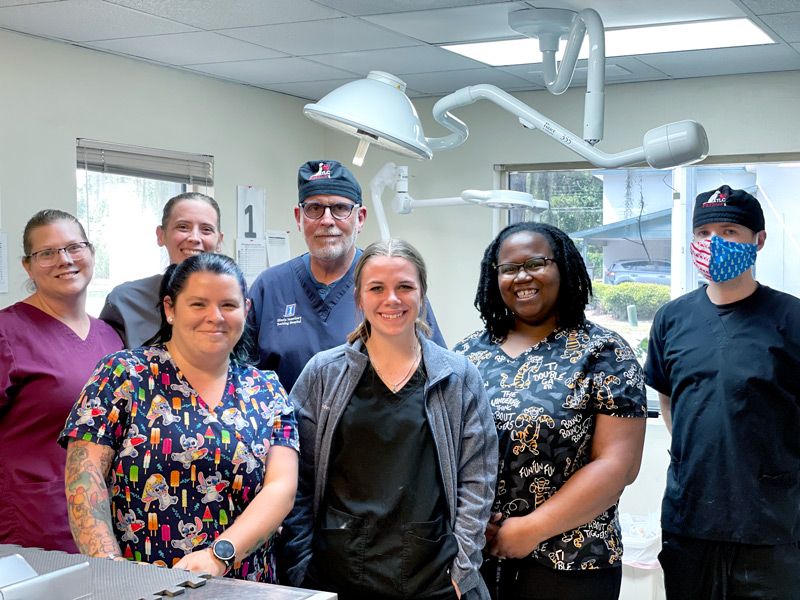Blog: Why play golf when you can spay cats?
A retired veterinarian encourages fellow retirees to stay in the spay/neuter game
May 20, 2022

After a long and varied veterinary career, including stints in private practice, at a global nonprofit, and at the University of Illinois College of Veterinary Medicine, where I directed the shelter medicine program and trained students in high-quality, high-volume spay/neuter techniques, I decided it was time to retire. I figured I’d go somewhere warm, far from the Illinois winters, and play golf year-round.
That’s not how it turned out.
After moving to Florida, I discovered that I really missed doing spay/neuter. I got a Florida veterinary license and contacted TLC PetSnip, a nonprofit clinic in Lakeland, about part-time and volunteer opportunities. I now spay and neuter dogs and cats a couple of days a week, and since my real passion is community cat management, I volunteer for those clinics as often as possible.
I’ve been in Florida almost three years now and have yet to play a round of golf.
A gratifying course
We’ve all heard about the growing shortage of veterinarians and its effect on access to veterinary care and low-cost animal sterilization. If you’re a retired, semi-retired or soon-to-be retired veterinarian (or veterinary technician), you can have a big impact on increasing available spay/neuter resources in a community, even if you sterilize animals just a few days a week or month. Many nonprofits need help, but not necessarily full-time help.
Veterinarians can earn $500 to $800 a day doing HQHVSN. (Just be careful with respect to Social Security as there are limits to what you can make until you reach full retirement age; I got burned with that.) If you don’t need the income, volunteer!
The work is meaningful in so many ways. The people who come to TLC PetSnip are good, caring people who just don’t have the resources to go to a full-service veterinary clinic. This was something I first realized when I was at the University of Illinois and we worked with the Pets for Life program in Chicago. The people who access these programs often have smaller social networks, smaller family networks, smaller support networks. Their pet is a source of unconditional affection in their life, and they should be supported.
Another benefit of being a “retired” veterinarian working in spay/neuter has been the relationships I’ve developed. I know TLC PetSnip is happy to have me (they’ve told me so), which is gratifying in and of itself, and spending time with like-minded individuals and talking with other veterinarians keeps my clinical thinking pathways open and active. I care about the people I work with and look forward to the time I spend with them.

Achieving par
Perhaps you haven’t done much spay/neuter in a long time. Simple solution: Find a clinic and see if someone there will mentor you. There are great resources available to learn HQHVSN techniques, but nothing beats hands-on experience. With a mentor, you will become a more efficient spay/neuter surgeon in no time.
At TLC PetSnip, I find it immensely gratifying to mentor younger veterinarians in HQHVSN techniques and to work with seasoned veterinarians who don’t have much spay/neuter experience and who, like me, may be retired (or retiring soon) and still want to remain active in the profession and contribute to their community. It’s extremely rewarding to help a promising surgeon gain competence and confidence under my tutelage.
I enjoy doing spay/neuter work—honestly, more so than playing golf. It gives me a sense of contributing to the community. It helps the animals and caretakers who can’t afford standard private practice rates.
If you’re a retired, semi-retired or soon-to-be retired veterinarian or veterinary technician, consider the opportunities to put your professional skills to good (and much needed) use. I promise that you’ll feel genuinely fulfilled at the end of the day. It’s certainly more gratifying than hitting a little white ball into the rough or the bunker.

